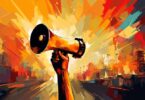Every March 8th, the world celebrates International Women’s Day. It’s a day to recognize how far women’s rights and gender equality have come, but it’s also a time to admit the world still has a long way to go. According to 2022 data, it could take 286 years to end gender discrimination and achieve full legal protection for women and girls. Originally, International Women’s Day was a call to action for universal suffrage and equal economic rights. That message still resonates today. In this article, we’ll explore the history of International Women’s Day, where you can learn more and how everyone can participate.
With roots in 20th-century socialist politics and revolutionary action, International Women’s Day is a time to celebrate women’s rights and work for gender equality.
What’s the history of International Women’s Day?
International Women’s Day has deep roots in socialist, working class politics. In 1907, the International Conference of Socialist Women held their first gathering. According to Jacobin, their goals included universal female suffrage, which they advocated for without barriers regarding property ownership, tax, education and so on. In 1909, thanks to a declaration by the Socialist Party of America, the United States held the first National Women’s Day on February 28th. The next year, at their gathering in Copenhagen, the International Conference of Socialist Women agreed to recognize an International Women’s Day.
The first International Women’s Day celebration took place on March 19th, 1911. Over one million women and men participated in rallies across Austria, Denmark, Germany and Switzerland. They advocated for women’s right to vote, the right to hold public office, and women’s right to work. In 1913-1914, women in Russia celebrated their first International Women’s Day on February 23. In 1917, Russian women went on a strike for “Bread and Peace.” It was the end of February on the Julian calendar, which Russia used at the time, but the protest fell on March 8th on the Gregorian calendar. The crowds quickly grew to around 150,000 people, all holding banners reading “Bread” and “Down with the Czar.” Just days later, Czar Nicholas abdicated, ending the Romanov family’s three-century rule. The provisional government quickly gave women the right to vote. International Women’s Day was recognized by the United Nations for the first time in 1975. It’s now celebrated around the world every year on March 8th.
Why is International Women’s Day important? This article explains why.
What International Women’s Day resources are available?
International Women’s Day (IWD) is a great opportunity to learn more about women’s history, women’s rights, and the people – both past and present – who have fought for gender equality and freedom around the world. Here’s a list of 10 resources:
The United Nations
The United Nations is a good source for information about IWD’s background, gender equality, human rights and much more. On the main page, the UN explains what this year’s current IWD focuses on. The theme for IWD 2023 was “DigitALL: Innovation and technology for gender equality.” The UN held an event on March 8th with technologists, innovators, gender equality activists and entrepreneurs invested in improving access to digital tools. Because technology can either close or widen economic and social inequalities, it’s essential to protect the rights of women and girls in digital spaces. The UN’s IWD page also features websites, publications, stories and messages from various UN bodies on that year’s topic.
UN Women
UN Women is the UN entity responsible for working toward gender equality and empowering women. It’s a great resource for information about gender equality year round, not just on March 8th. You can find messages from the executive director, press releases, media advisories and other resources. On its digital library, you can find reports like the Gender Snapshot for the year, case studies, policy briefs, brochures and handbooks.
UNESCO
UNESCO (the United Nations Educational, Scientific and Cultural Organization) is a specialized UN agency focused on promoting world peace through education, arts, sciences and culture. It offers Sustainable Development Goal resources for educators on gender equality, as well as all the other SDGs like zero poverty, zero hunger, quality education and climate action. With the gender equality resource, you select which learning level you want resources for (early childhood care and education, primary education or secondary education ) and check out pedagogical resources, classroom activity ideas and multimedia educational resources.
The Council of Europe
The Council of Europe is an international organization promoting human rights, democracy and the rule of law in Europe. It offers a variety of resources covering gender equality and women’s rights on its website. You can search by theme, type of resource, language and year going back to 1953. Publications like infographics, fact sheets, guides, handbooks and studies are available.
Harvard’s Gender Action Portal
The Harvard Kennedy School Women and Public Policy Program created the Gender Action Portal (GAP). It’s a useful tool for researchers, policymakers, students, journalists and other practitioners interested in gender equity. It includes information on experimental methodologies in gender equity research, intersectional research and summaries on various topics like health, education and development. The portal also lists impact evaluations, gender data, gender indexes and publications on women’s rights and gender equity.
Classes are another great way to learn about women’s rights. Here’s a list of 8 courses about women’s empowerment.
Focus2030
Focus2030 is an organization focused on boosting “the impact, visibility and influence of the international development community.” It tracks the progress of the 17 Sustainable Development Goals. It also hosts an overview of the data on gender equality across the world. It includes data from places like the World Bank, the World Economic Forum, UNICEF, the World Health Organization and other respected entities. A variety of topics are covered, including economic justice, gender-based violence, reproductive health and education. At the time of writing, the overview was last updated in March of 2023.
Ethical Trading Initiative
Founded in 1998, the Ethical Trading Initiative is a UK-based body consisting of companies, trade unions and NGOs. The goal is to ensure member companies meet global supply chain and labor standards. The ETI Base Code includes standards such as no discrimination and no harsh or inhumane treatment. You can find resources on gender equality on the ETI’s website, such as a resource kit on gender-based violence, materials on trade union activities around women’s rights, case studies and more.
The International Center for Research on Women
Since 1976, the International Center for Research on Women has operated as a non-profit with offices in several countries. Their mission is to promote gender equality, inclusion and prosperity in international development. You can find a variety of resources on their website, such as infographics, policy briefs, case studies, fact sheets, toolkits, articles and much more.
Oxfam International
Oxfam is a confederation of independent charitable organizations focused on eradicating global poverty. Its website offers a series of International Women’s Day resources for students aged 9-14. It includes a PowerPoint on gender equality issues, classroom activity suggestions and an assembly and activity pack. You can also sign up for Oxfam’s education newsletter
Equality Now
Equality Now is an NGO founded in 1992. It advocates for the promotion and protection of women’s rights with a network of lawyers, activists and supporters. Its website offers a library of resources on women’s rights issues like sexual violence, legal discrimination, family law, child marriage and more. Resource types include court documents, fact sheets, toolkits and manuals. You can search the library by resource, language, issue and region.
To learn more about gender equality, check out our Gender Equality 101 article.
What activities can you do for International Women’s Day?
If you want to participate in International Women’s Day, there are lots of activity options. Here are three:
Donate to a women’s rights organization
Countless organizations are working to promote and protect the rights of women and girls. In recognition of International Women’s Day, consider setting up a one-time or even monthly donation to a legitimate organization. If you’re not sure about the impact of an organization, check out their annual reports or research what others are saying about the organization.
Support women-owned businesses
Owning a business is hard enough, but women-owned businesses face unique obstacles due to gender discrimination and inequalities. According to the World Economic Forum, male business owners outnumber women by about 3-1, so support is very important. On March 8th, identify the women-owned businesses in your area or with products available online. While these businesses need support year-round, International Women’s Day is a great opportunity to show you care about women’s empowerment and economic rights.
Watch a film about women’s rights and gender equality
There are many films about women’s rights, gender equality, important feminists and other related subjects. For the most accurate information, choose documentaries like 9to5: The Story of a Movement, My Name is Pauli Murray, End of the Line: The Women of Standing Rock, and What Happened, Miss Simone? You can watch the movie by yourself or with a small group at home. See if any organizations in your area are holding movie screenings. If you want to host your own screening, you will likely need to get permission to show the movie.












